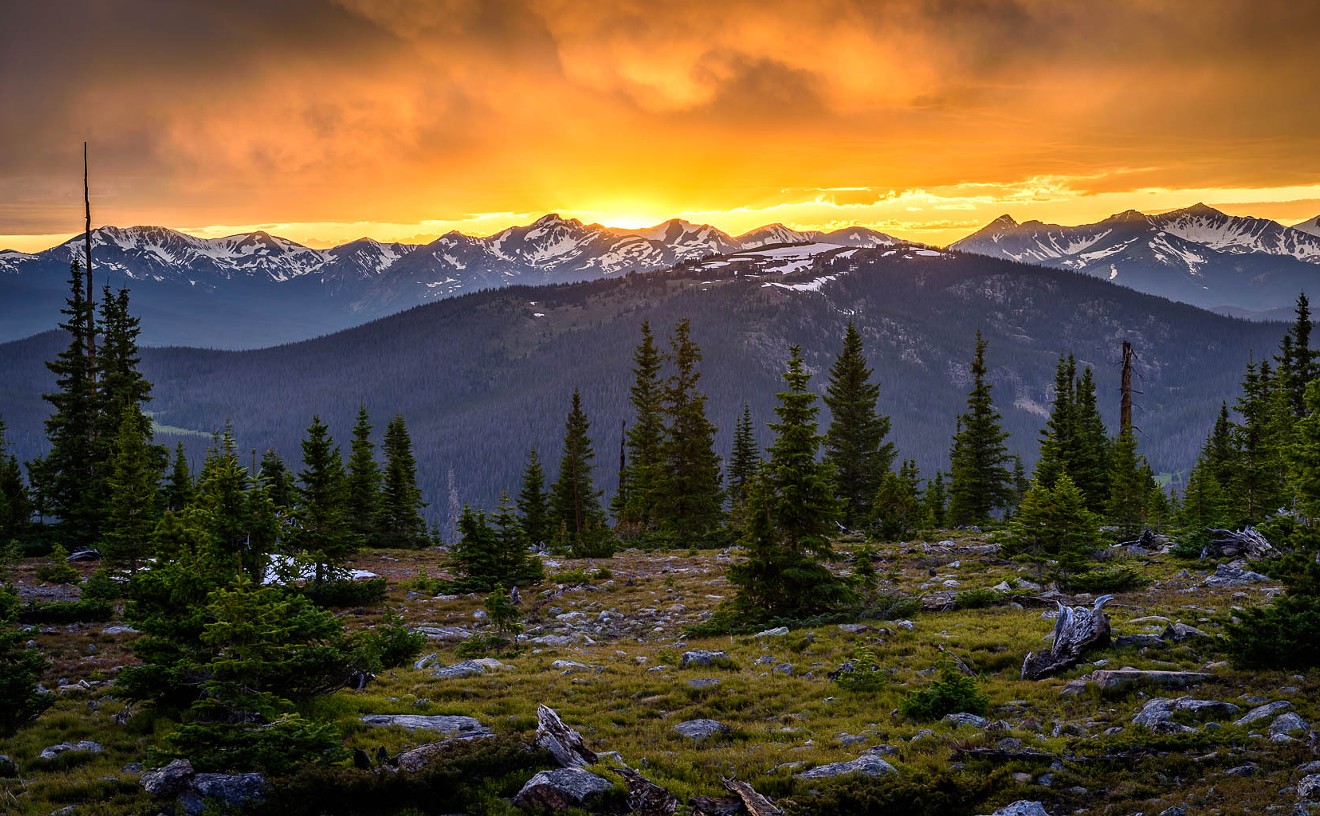See also: Best Recording Studio Denver 2007 - 8 Houses Down
In 2007, while teaching recording arts and physics classes at the University of Colorado Denver, Merkel started an on-campus club called "Gear Builders" for students who were interested in making music equipment. That group eventually turned into Signal to Noise, an open collective of freelance artists, scientists and engineers dedicated to collaborating on interesting sci-art projects."The idea of what we do is take art and inject as much science as we can," Merkel explains. "The art of science and the science of art -- we use science to express artistic endeavors."
Merkel wasn't always set on sci-art -- or even on teaching. When he graduated the University of Colorado Boulder in 1997 with a biochemistry degree, he was interested in music. The, his entrepreneurial grandfather steered him toward ditching his lab coat and starting his own business, a mastering studio called "Mach 8."
"I was in bands all through college. We would go in and record at different studios around town and I fell in love with it," Merkel recalls. "My grandpa was a huge entrepreneur and he's the one who pushed me to start my own company. I had to go and do a whole business plan and I took out my first loan to get my studio gear and put it in the second room of my apartment."
Since he was connected to Boulder's music scene, Merkel had a few clients right away. But as his studio began to grow, he wanted to expand his knowledge. "I really like the idea of staying sharp with my skills, so I saw this class being offered called the Physics of Music and Sound and I went and talked to the professor to see if he'd let me audit it," Merkel says. "Because I had been getting really heavy into mastering, he said, 'Dude, you know more about this stuff than I do. You should be teaching this class.'"
The teaching bug soon bit Merkel and from 2000 to 2006 he taught at CU-Boulder as a TA while running Mach 8. During that six-year span, Merkel started working with Chris Fogel, the founder of 8 Houses Down studios. They eventually combined forces and in 2003, Fogel moved the operation to Denver. By that time, Merkel was engaged and his soon-to-be wife wanted to return to her hometown of Denver, as well.
"I knew they had this recording arts program at CU Denver and I was like, 'Man, I should probably be teaching in recording arts, because I run (8 Houses Down)," Merkel says. "So I blasted through the masters' program in recording arts with the sole intent to teach. Then I missed my sciences, so I approached the physics department and they let me in. It really set the precedent for all this interdisciplinary stuff."
Part of that "stuff" was Signal to Noise's first project at Gates Planetarium. In graduate school, Merkel did some acoustic research work at Gates; later, his friends needed a venue for a big projection mapping project. "I called up Dan Neafus, who runs Gates, and he literally gave us keys to the planetarium," Merkel says.
When Merkel realized that Gates uses a fifteen-speaker sound system to create amazing soundscapes within the planetarium, he tasked his Signal to Noise crew with help creating software for mixing on the huge surround sound setup. Signal to Noise has used Gates as its meeting place every Tuesday night since then. Having access to the planetarium has allowed the group to focus on more interactive projects, like "Open Windows" at Denver International Airport.
In August, DIA approached Signal to Noise about making two permanent installations using the entire airport as its canvas; the airport asked for them by December. Always the pragmatist, Merkel wanted to make the pieces very engaging but fairly simple -- sort of like a game.
"I'm into the idea of the 'gameification' of things," Merkel says. "I was thinking of different ideas and came up with a really large version of Connect Four. The cool thing about Connect Four is if you have this gigantic grid of dots, you can play the game, but you can also play other stuff, too. Depending on the kind of lighting you put in there, you can do anything you want with it."
So Signal to Noise set out to create two eleven-foot tall, double-sided, eight-by-eight grids of multicolored lights, complete with motion sensors. Airport travelers who pass by the sensors will cause the giant grid to light up and outline their specific movements. Meanwhile, playing Connect Four is as simple as waving one's hand.
And, because of the open-source software that "Open Windows" uses, anyone with some programming knowledge can play games or create light shows on the grid. On an artistic level, the name has an even deeper meaning.
"The idea is that you can see through it, that was a big thing for me," Merkel says. "I wanted to be able to see through the entire thing, so it was a juxtaposition of digital technology across an analog world. It's a window into the digital world."
Because of the project's well-publicized unveiling at DIA last Friday, "Open Windows" has actually opened a few doors for Signal to Noise and Merkel has already been approached about creating pieces for various galleries and public spaces around Denver. Currently, he is working on a more "mobile" version of "Open Windows" for the Sculpture Park at the Denver Performing Arts Complex.
Beyond the projects, Merkel is still trying to expand Signal to Noise's workspace and find more members. "Basically, we're still small," he says. "We're lucky we got this opportunity, but if we can capitalize on it with a few more of these big public projects, it gives us the experience of large-scale project management. Once you get above eight pretty good-sized projects, then you become eligible for some really big projects. That's where I would like to be."










